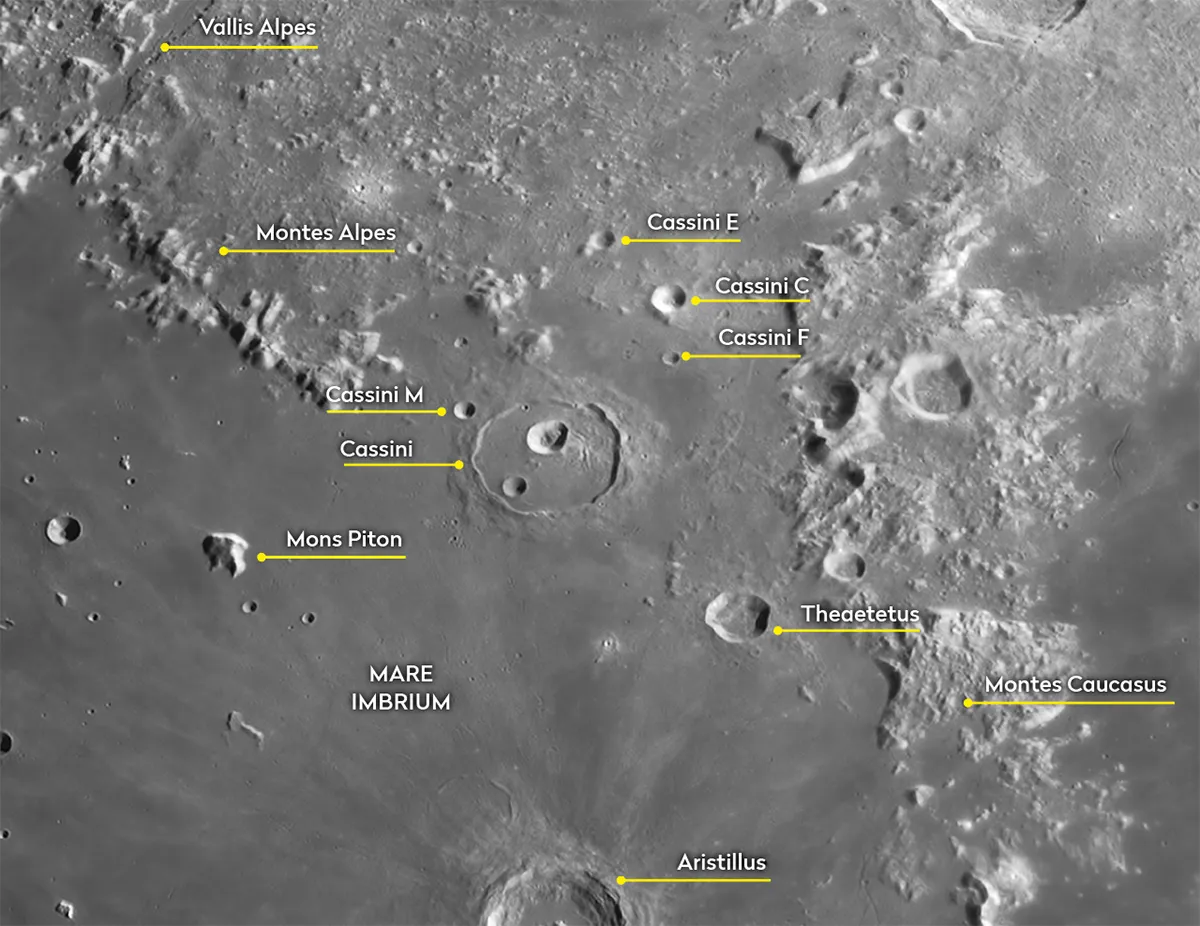Montes Teneriffe on the Moon is an easy-to-identify mountain range located in the northern part of 1,250km-diameter Mare Imbrium, immediately southwest of the distinctive 101km dark lava-filled crater Plato.
The range stands out because it’s located on the flat, dark lava of the lunar mare.
Montes Teneriffe facts
- Type: Mountain range
- Size: 120km x 40km
- Longitude/latitude: 13.2° W, 47.9° N
- Age: 3.2–3.9 billion years
- Best time to see: One day after first quarter or last quarter
- Minimum equipment: 100mm telescope

How to find Montes Teneriffe
Named after the island of Tenerife in the Canary Islands, the range consists of a few isolated mountains and one three-armed branch.
The linear mountain range further to the west isn’t part of Montes Teneriffe, but rather 90km x 20km Montes Recti.
From Montes Recti, head east for 50km and you’ll arrive at the first massif of Montes Teneriffe, a rough elevation measuring 26km east to west and 18km north to south.
Its main peak rises to 2km above the surrounding surface of Mare Imbrium.
A wrinkle ridge runs up through this feature, heading south to north, passing up through 9.4km Plato D.
Look 70km south of the main massif and you’ll arrive at 11.6km Pico B.
Further east lies the three-armed structure that actually turns out to be a linear structure 63km in length and 20km wide, with a second detached mountain to the north, the division between the two being very narrow.

Typography and key features
The highest peak on the main section of Montes Teneriffe sits around 1.4km above Mare Imbrium’s surface, while that on the smaller section to the north rises to a maximum height of around 900m.
The region immediately to the west of the main east–west structure is occupied by a subtle bulge in the surface of Mare Imbrium, known as dome Pico B1.
Measuring 11km x 16km, this is a shield volcano rising to an approximate height of around 150 metres.
An additional massif is located 27km further to the west of the northern arm of the three-armed main section of Montes Teneriffe.
This is 20km x 14km in size and rises to a peak height of around 1.2km.
Following the line of the main linear structure within the range points east to a few smaller bumps and craterlets, the largest of which is 4km Pico G.
Follow the line further east and you’ll arrive at the impressive Mons Pico, a 25km x 15km mountain that rises 2.2km above the flat surface of Mare Imbrium.

Observing Montes Teneriffe
It’s the relatively flat surrounding lava that gives these mountains their visual impact.
During elevated illumination, when the Sun is high in their sky, the mountains appear bright against the darker lava which surrounds them.
But it’s when the Sun gets low in their sky that things really start to get interesting.
Under such circumstances, elevated structures cast extensive shadows across the Moon’s surface, but it’s often the case that other structures or rough terrain get in the way and dilute the shadow’s impact.
Here, the flat surrounding lava of Mare Imbrium acts as a screen on which these impressive shadows can be displayed.
Consequently, at the times when the Sun is at a low angle, the mountain peaks cast sharp, jagged and elongated shadows across the surrounding surface.
This often gives the impression that the mountains are much taller than they actually are.
If you observe or photograph Montes Teneriffe, let us know by emailing contactus@skyatnightmagazine.com
